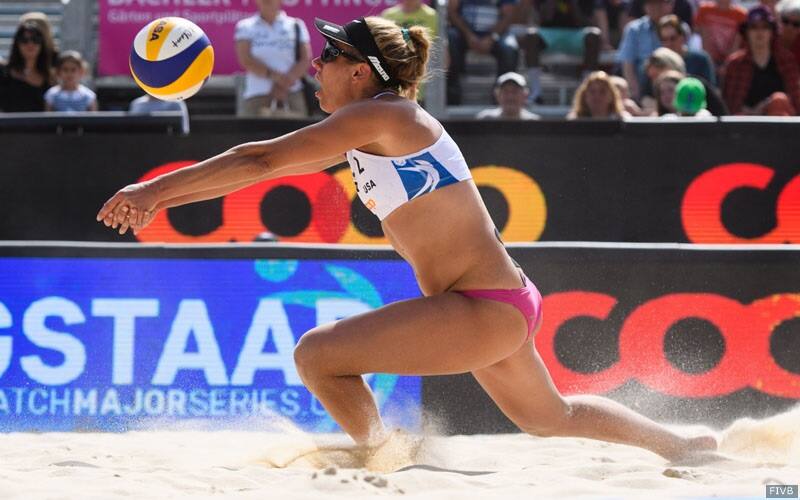
Winning volleyball starts with reliable passing. Here's some advice from five experts on how you can deliver a better ball to your setter.
April Ross
2012 Olympic Beach Volleyball silver medalist (2016 bronze medalist); USC indoor AVCA All-American
For me, it's important to have two or three cues to say to myself before each serve to reinforce what I want to do with the pass. My cues have changed throughout the years. Now that I'm playing beach, one thing I always say is, "Wait, but be ready to go forward." That's somewhat unique to the beach game. But the idea is to reinforce patience. If you charge at the ball and then have to back up, you can put yourself in an unbalanced position. By being patient and waiting, you're more likely to be stable, which leads to more consistent passing. I say that cue to myself in my head before every serve.
Pete Hanson
Head coach, Ohio State University men's volleyball team
We tell our players to try to get as much information about the serve as they can in the first 10 to 20 feet that the ball has traveled from the server's hand. Among the things we ask them to watch: speed, the zone it's being directed to, the depth of the serve. This helps passers prepare and adjust their feet and body positions to deal with the type of serve. As the server is serving, we want our players to have their arms and platforms out away from their bodies in a ready position. The movements that players make before passing should be small, quick adjustments. We want players to be stopped before contact. If possible, we'd like them to keep their bodies behind the ball, but most important is that their platforms are facing the target when the ball is contacted. After the players make contact with the ball, we ask them to hold the position of the platform (or, as we say, to stick it) and let the ball rebound to the target.
Nicole Davis
Libero, back-to-back U.S. Olympic Women's Volleyball Team silver medalist
My usual focal points for reception revolve around the following cues: 1. Feet; 2. Track; 3. Forward. Before the server contacts the ball, have a plan. Know the server's tendencies, front load the possibilities, and the seam responsibilities. Get an assertive first step and move in a balanced position so you can take another step or two if you need to adjust. Track the ball, as the line may change depending on the type of trajectory of the serve. Finish forward, acting on the ball with your platform, trusting the angle to do the work.
Joy McKienzie-Fuerbringer
Assistant coach, UCLA women's volleyball team, starting setter on Long Beach State's 1993 NCAA championship team
I work with players on focusing their eyes on the bottom of the ball. This helps the passer get the platform under the ball, which is important because it slows the ball down and directs it to the target. A common mistake that players make is to position their platform to the side of the ball. This often leads to passes that are too fast and have a flat trajectory, which makes the setter's job harder and can disrepute the rhythm of your offense. By focusing on the bottom of the ball, you increase the odds that you'll deliver a perfect pass, and that makes it more likely that the set will be good and the hit will be successful.
Kevin Hambly
Head coach, University of Illinois women's volleyball team
The key that has worked well for our players is to have a solid foundation before you contact the ball. To us, a solid foundation means having everything below a player's waist static before the contact. There are times when players take a knee or two knees to assure that their lower body is static. Having a solid foundation allows the player to get a better look at the ball and to initiate contact in the require angle.

